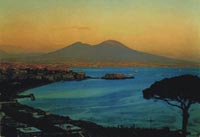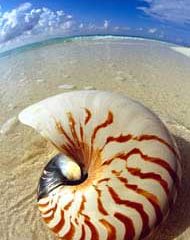Earth Sciences (also referred to as Geosciences), which deals with basic issues surrounding our planet, plays a vital role in the area of energy and raw materials supply.
Earth Sciences comprises subjects such as geology, geography, geological informatics, paleontology, mineralogy, petrography, crystallography, geophysics, geodesy, glaciology, cartography, photogrammetry, meteorology and seismology, early-warning systems, earthquake research and polar research.

Residual heat from volcanic activity may be causing a river of ice to flow in Greenland, a new study indicates. Geologists have found that the region directly above a stream of relatively fast moving ice is thinner than a simple model of glacier change would predict. This observation, described in a report published today in the journal Science, may help researchers pin down the contribution ice sheets have made to sea level changes.
Glaciers are built up from layers of fused snow that spr

Most climate change research has focused on gradual changes, such as the processes by which emissions of greenhouse gases lead to warming of the planet.
But new evidence shows that periods of gradual change in Earth’s past were punctuated by episodes of abrupt change, including temperature changes of about 10 degrees Celsius, or 18 degrees Fahrenheit, in only a decade in some places.
Severe floods and droughts also marked periods of abrupt change.
A new report from the Nati

American Geophysical Society Meeting, San Francisco, December 2001
Pressure system secrets could help long range forecasts.
The rise in levels of greenhouse gases has halted an oscillation of air pressures over the Arctic, bringing warmer, wetter winters to Northern Europe, Siberia and Alaska. The shift could get worse with increasing CO2 emissions, delegates heard this week at the American Geophysical Union meeting in San Francisco, California.
The trend is unlikel

In 1998, Paul F. Hoffman and Daniel P. Schrag at Harvard University put forth a chilling description of earth’s climate some 650 million years ago. Their theory, dubbed snowball earth, held that between 750 million and 580 million years ago, ice repeatedly enveloped our planet, coating the seas from pole to pole and killing off early life almost completely. During the past few years, the idea has stirred up a great deal of debate. And new data published in the December issue of Geology only furt

Mount Vesuvius, the volcano most famous for blanketing the towns of Pompei and Herculaneum with lava and debris in 79 A.D., may be sitting atop a reservoir of magma that covers more than 400 square kilometers, a new study suggests. The finding, reported in the current issue of the journal Science by a group of Italian and French scientists, may lead to more accurate monitoring of the area surrounding the volcano.
Building on previous work that suggested the presence of a magma zone underne

Water trapped for millions of years gives a glimpse of oceans’ turbulent past.
Drops of sea water entombed within salt crystals millions of years ago are giving researchers a glimpse of ancient oceans. The water, trapped during evaporation, reveals that the seas have seen large chemical changes during their history.
“The consensus had been that sea-water chemistry hadn’t changed that much over the past 600 million years,” says geochemist Juske Horita of Oak Ridge National La